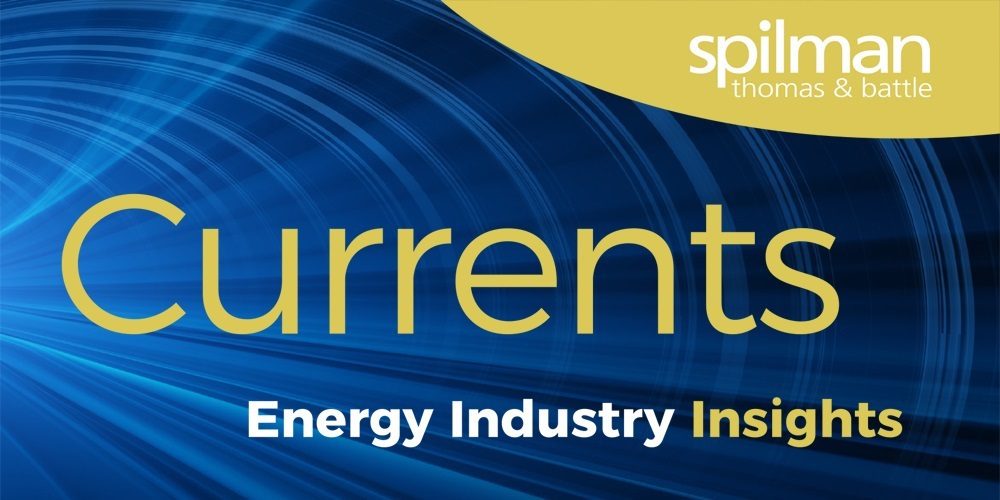Article
Resources
Article
Chevron, Energy and the Pivotal Shift

By Derrick Price Williamson and Schenley N. Kent
The U.S. Supreme Court recently overturned the Chevron doctrine, a significant legal principle established by Chevron U.S.A., Inc. v. Natural Resources Defense Council. For 40 years, lower courts have relied on the Chevron doctrine to decide thousands of cases dealing with deference to federal agencies. This doctrine required courts to defer to federal agencies' interpretations of ambiguous laws if the agency's position was reasonable. The move to eliminate Chevron deference is anticipated to disrupt agency rulemaking efforts throughout the U.S. government and necessitate that Congress be much more precise when drafting legislation for agency enforcement.
The decision is the latest in a series of ongoing legal challenges to what critics refer to as curbing the "administrative state." The Court's recent 6 - 3 decision in the cases of Loper Bright Enterprises v. Commerce and Relentless Inc. v. Commerce marks a pivotal shift, emphasizing that courts should exercise independent judgment exclusively rather than deferring to agencies on legal questions.
Loper Bright and Relentless were initiated through separate legal challenges to a regulation mandating domestic herring vessels to finance fishing monitors required by federal law. In both cases, the appeals courts applied Chevron deference, determining that the National Marine Fisheries Service's interpretation of the enabling statute was reasonable. The parties from Loper Bright and Relentless appealed the lower Court's decision and petitioned the Supreme Court review. The petitioning parties argued that overturning or clarifying Chevron was necessary due to years of implementation confusion.
Chevron deference was first established in the 1984 case Chevron v. Natural Resources Defense Council, which addressed the EPA's interpretation of "stationary source" under the Clean Air Act. The Supreme Court's unanimous decision favoring Chevron and the Reagan administration's interpretation of the Clean Air Act was considered a conservative victory. The Chevron doctrine introduced a two-step test to limit perceived judicial overreach by the U.S. Court of Appeals for the District of Columbia Circuit. The first step requires courts to determine if Congress has addressed the legal question. If the law is ambiguous, the second step mandates that courts defer to federal agencies' reasonable interpretations of those ambiguous statutes.
With this most recent ruling, the longstanding legal precedent stands to transfer countless legal and regulatory outcomes from the executive branch to Congress and the courts. Chief Justice John Roberts, writing for the majority, highlighted that statutory ambiguities are not implicit delegations of interpretative authority to agencies, contrary to what Chevron suggested. The Chief Justice wrote, "Perhaps most fundamentally, Chevron's presumption is misguided because agencies have no special competence in resolving statutory ambiguities,"… but "Courts do." Justices Clarence Thomas and Neil Gorsuch further underscored that the Chevron doctrine conflicted with the Constitution and the Administrative Procedure Act (APA) and compromised the judiciary's role in interpreting laws.
All three of the Court's liberal justices joined in a dissent authored by Justice Elena Kagan, who contended that the majority opinion recklessly overturns four decades of legal precedent at a time when regulatory agencies are confronting numerous complex challenges. In her dissent, Justice Kagan wrote that the majority's decision "puts courts at the apex of the administrative process as to every conceivable subject — because there are always gaps and ambiguities in regulatory statutes, and often of great import." Justice Kagan emphasized that agencies possess the technical expertise necessary for interpreting complex regulatory laws, and the Chevron doctrine had supported vital regulatory measures for decades. The liberal justices forewarn that the abolition of Chevron will significantly increase the influence of non-expert judges making rulings on technical issues ranging from environmental protection and public health to consumer safety that are better suited to be decided by agency professionals who have the skills and expertise to interpret the subject matter.
During oral arguments for Loper Bright and Relentless in January, conservative justices voiced concerns that Chevron has caused regulatory inconsistency at agencies depending on which party controls the executive branch. "This results in major societal problems not being resolved," argued counsel for Loper Bright. The Chief Justice, writing for the majority, agreed with the Loper Bright counsel that Chevron has caused regulatory uncertainty. "Chevron's broad scope creates unwarranted instability in the law, leaving those affected by agency actions in a perpetual state of uncertainty," Roberts stated. He highlighted that the Supreme Court has not applied Chevron deference since 2016, yet lower courts still struggle because the doctrine "remains on the books."
Chief Justice Roberts also argued that Chevron forces courts to treat ambiguities as intentional delegations, preventing judges from performing their duty. By overturning Chevron, the majority concluded that the APA does not compel courts to defer to agency interpretations of the law. When a statute's best reading delegates discretionary authority to an agency, courts should independently interpret the statute and fulfill Congress's intent within constitutional limits. Courts may respect an agency's expertise, but should not be bound by its interpretation. Chief Justice Roberts clarified that this ruling applies prospectively to future cases, leaving prior decisions based on Chevron intact.
The importance of this ruling and its lasting impact on administrative agencies cannot be overstated. This new precedent will almost certainly lead to increased legal uncertainty as courts take a more active role in interpreting statutes. The Court's approach to these new legal interpretations may result in more inconsistent rulings and less predictability for regulated agencies. Additionally, policy shifts could become more abrupt with changes in administration, potentially disrupting the regulatory landscape every few years due to new agency interpretations that lack the stabilizing effect of Chevron deference. In that regard, this new ruling only applies to future cases, special interest groups have already begun strategizing on how to use the favorable ruling to intensify efforts to reduce regulations on climate, energy, and technology in Washington, DC. This concerted effort is all but certain to lead to an increase in legal challenges to federal regulations. The debate over Chevron is indicative of a microcosm of broader philosophical disagreements about the proper scope and limitations of administrative power in a democratic society and the dynamic between the judiciary and federal agencies moving forward.


